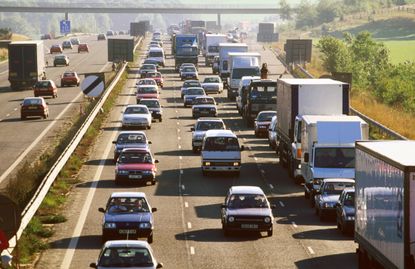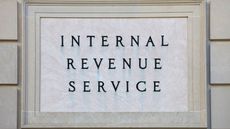Most Common Types of Car Insurance
These are the most common types of car insurance


Car insurance can help you cover expenses in the case of an accident, including medical bills and repairs. However, how much coverage you have depends on the type of car insurance you have. The following are the most common forms of car insurance — this includes coverage that is mandatory and optional insurance.
Most Common Types of Car Insurance
Liability insurance
If you cause a car accident, liability insurance covers the cost of any damages and injuries to the other driver. Liability insurance is required in all states except for New Hampshire and Virginia. There are two types of liability insurance — bodily injury liability and property damage liability.
Bodily injury liability: In the event that you cause a car accident, physical injury liability insurance is used to cover the other party’s medical expenses.

Sign up for Kiplinger’s Free E-Newsletters
Profit and prosper with the best of expert advice on investing, taxes, retirement, personal finance and more - straight to your e-mail.
Profit and prosper with the best of expert advice - straight to your e-mail.
Property damage liability: If you are at fault in an accident, property damage liability insurance will cover repair costs to the other party’s property, such as their car, fence, or mailbox.
Uninsured/Underinsured motorist coverage
In some states, uninsured and/or underinsured motorist coverage is required. This type of insurance covers any expenses that arise in the case of another driver hitting you, and there are four different types of coverage that could be required.
Uninsured bodily injury: This covers your medical expenses if you are in an accident and the at-fault driver has no insurance.
Underinsured bodily injury: This covers your medical expenses if you are involved in an accident and the at-fault driver’s insurance is not enough to cover your overall expenses.
Uninsured motorist property damage: This type of insurance pays for any repairs needed if you are in an accident and the at-fault driver is uninsured.
Underinsured motorist property damage: If an at-fault driver’s property damage liability insurance is not enough to cover repair costs to your vehicle, this type of insurance will cover any uncovered expenses.
Collision and Comprehensive Insurance
Collison and comprehensive insurance are optional in every state but are usually required by lenders if you are financing or leasing your vehicle.
Collision Insurance: Regardless of who is at fault in an accident, collision coverage will pay for any damages to your vehicle. It will also cover any damages to your vehicle if you get into a single-car accident. Collision insurance covers up to the actual cash value of your vehicle and carries a deductible.
Comprehensive Insurance: Comprehensive insurance covers your vehicle if it is stolen or if it's damaged by anything other than a car accident, such as vandalism or flooding.
Personal injury and medical payments coverage
Coverage for personal injury protection and medical payments is required by law in the 12 no-fault states*.
Medical payments coverage: This type of insurance helps cover any medical bills for you and your passengers in the case of an accident, regardless of who was at fault. If you are hit as a pedestrian, this insurance will help cover medical costs in that case as well.
Personal injury protection: Personal injury protection also helps cover any medical bills for you and your passengers in the case of an accident, regardless of who was at fault. It can also cover other necessary expenses, such as childcare, lost wages and funeral costs.
*12 no-fault states: Florida, Hawaii, Kansas, Kentucky, Massachusetts, Michigan, Minnesota, New Jersey, New York, North Dakota, Pennsylvania, and Utah.
Gap Insurance
Gap insurance can be beneficial for those who are still paying off or leasing a new vehicle, as it will cover the difference between the car’s value and how much you still owe if your car in the event your car is totaled. If you’re leasing a car, you’ll likely be required to carry gap insurance.
Related Content

Erin pairs personal experience with research and is passionate about sharing personal finance advice with others. Previously, she was a freelancer focusing on the credit card side of finance, but has branched out since then to cover other aspects of personal finance. Erin is well-versed in traditional media with reporting, interviewing and research, as well as using graphic design and video and audio storytelling to share with her readers.
-
-
 IRS is Targeting Promoters of Abusive Tax Schemes Kiplinger Tax Letter
IRS is Targeting Promoters of Abusive Tax Schemes Kiplinger Tax LetterTax Letter Tax schemes range from basic tax dodges to highly complex transactions.
By Joy Taylor • Published
-
 How to Save on Prescription Medication
How to Save on Prescription MedicationHow you can save money on prescription medication amidst rising prices.
By Erin Bendig • Published

